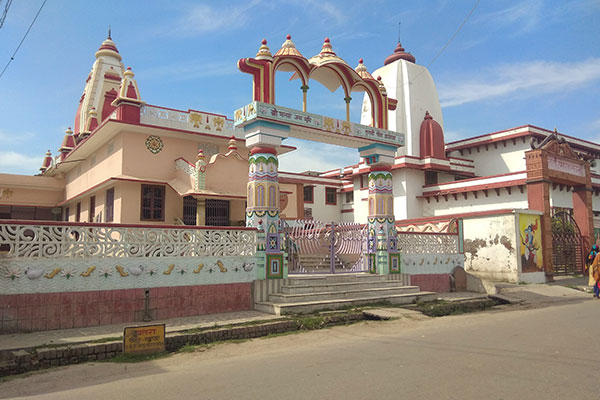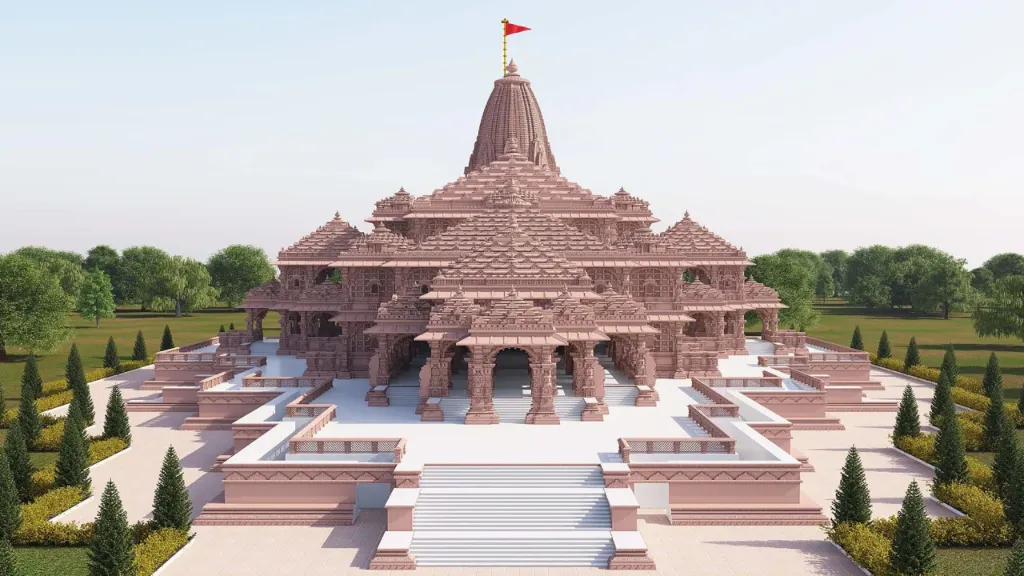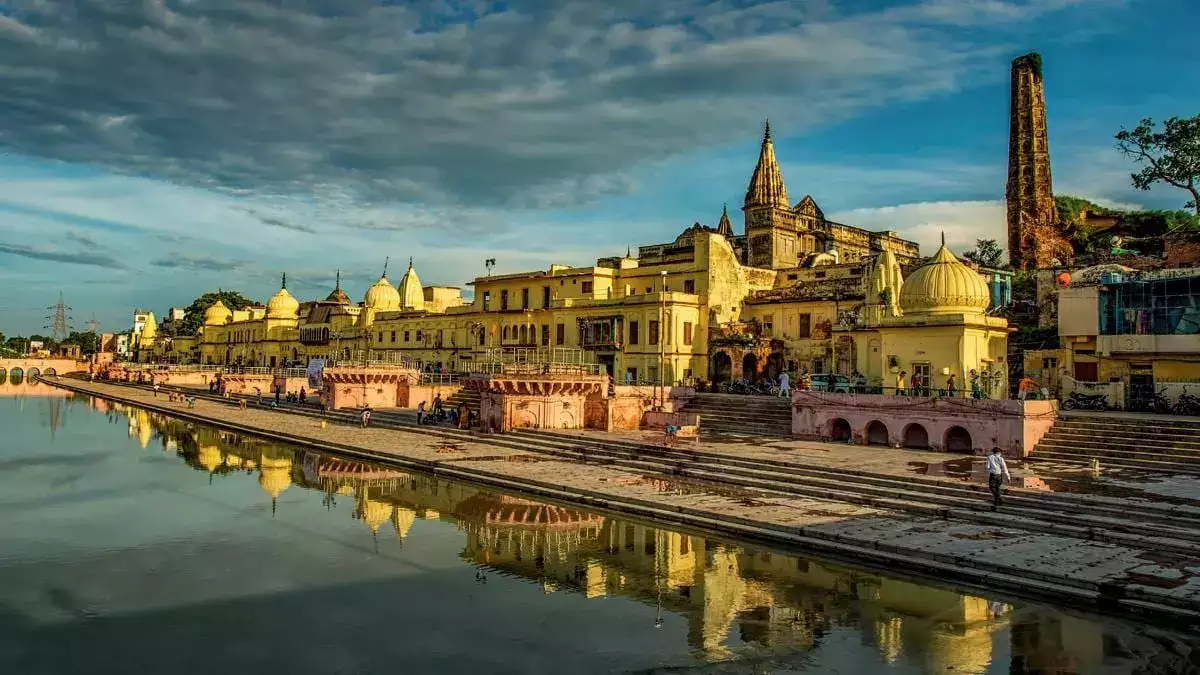Ayodhya is a beautiful city in Uttar Pradesh, India, known for its deep connection to Lord Rama, a beloved Hindu deity. Having lived in Ayodhya for two and a half years, I’ve discovered many amazing places and experienced its rich culture firsthand. In this article, we’ll explore the fascinating aspects of Ayodhya, from the must-see attractions and delicious cuisine to the historical dispute surrounding the Babri Masjid and Ram Mandir.
Exploring Ayodhya’s Beautiful Sites
- Ram Mandir Ayodhya: In the heart of Ayodhya, where history is as old as folklore and beliefs resonate through the air, a saga unfolds. The Ram Mandir, while rooted in ancient mythology, is reaching for the skies in modernity. Spread across 71 acres, this monumental site redefines the term ‘grand’. Within these sacred acres, the Ram Mandir, encompassing 2.77 acres, is divided into six parts. Know more about this divine Ram Mandir and its history here
- Ram Ki Paidi Ghats: Located on the banks of the Saryu River, these beautiful ghats are a perfect spot to relax and watch the evening aarti, a Hindu ritual of worship.
- Tulsi Smarak Bhawan: This museum commemorates the life and works of Tulsidas, a 16th-century poet who retold the story of Lord Rama in the local language.
- Mani Parbat: This small hillock is believed to be a part of the Sanjeevani mountain brought by Lord Hanuman to save the life of Rama’s brother, Lakshmana.
- Sita Ki Rasoi: A small temple dedicated to Sita, Rama’s wife, where it’s believed she cooked meals during their time in Ayodhya.
- Hanuman Garhi Temple: This ancient temple is dedicated to Lord Hanuman, a devoted follower of Lord Rama. Climb the 76 steps to reach the temple and enjoy a panoramic view of Ayodhya.

Exploring Ayodhya’s Local Cuisine
During your visit to Ayodhya, don’t miss the opportunity to indulge in the local cuisine. Enjoy mouthwatering street food like kachoris, samosas, and chaats. For those with a sweet tooth, try the famous peda, a milk-based sweet that Ayodhya is known for.
Understanding the Babri Masjid and Ram Mandir Controversy
1. The Origins of the Dispute : Babri Masjid’s Construction in 1528
The roots of the Ayodhya dispute can be traced back to the 16th century when the Mughal general Mir Baqi built the Babri Masjid, allegedly on the orders of Emperor Babur. Hindus claim that the mosque was constructed after demolishing a temple marking Lord Rama’s birthplace, leading to a prolonged conflict over the ownership of the site.
2. Ayodhya’s First Religious Clashes: 1853
In 1853, the first recorded incidents of religious violence occurred at the site, with Hindus and Muslims clashing over the right to worship. The tension between the two communities persisted for over a century.
3. The Appearance of Rama’s Idol: 1949
On the night of December 22-23, 1949, an idol of Lord Rama appeared inside the mosque, intensifying the dispute. The government declared the area disputed, locked the gates, and allowed only limited worship.
4. The Birth of the Ram Mandir Movement: 1984
The Vishwa Hindu Parishad (VHP) launched a campaign for the construction of a Ram Temple at the disputed site in 1984. The Bharatiya Janata Party (BJP) supported the movement, bringing the issue to national prominence.

5. Unlocking the Gates: 1986
In 1986, the Faizabad district court ordered the gates of the disputed structure to be opened, allowing Hindu worship at the site. This decision heightened tensions between Hindus and Muslims.
6. The Fall of Babri Masjid: December 6, 1992
On December 6, 1992, a large mob of Hindu nationalists demolished the Babri Masjid, sparking widespread communal violence across India. Over 2,000 people lost their lives in the ensuing riots.
7. The Legal Battle: 2002-2019
From 2002 to 2019, the legal battle over the disputed land continued, culminating in the Indian Supreme Court’s verdict favoring the construction of the Ram Temple and allocating separate land for a mosque.
- 2002: The Allahabad High Court begins hearing the Ayodhya title suits to determine the ownership of the disputed land.
- 2010: The Allahabad High Court delivers its verdict, dividing the disputed land into three parts: one-third each to the Sunni Waqf Board, Nirmohi Akhara, and Ram Lalla Virajman.
- 2011: The Supreme Court of India stays the Allahabad High Court’s judgment and begins hearing appeals.
- November 9, 2019: The Indian Supreme Court delivers its unanimous verdict in favor of building the Ram Temple on the disputed land, while also directing the government to provide a separate 5-acre piece of land for the construction of a mosque.
8. A New Beginning: August 5, 2020
On August 5, 2020, Indian Prime Minister Narendra Modi attended the groundbreaking ceremony for the Ram Mandir, marking a new chapter in Ayodhya’s history.
9. Pran Pratishtha : January 22, 2024
On January 22, Prime Minister Modi will inaugurate the consecration of Lord Ram’s idol at the temple. The invitation extended by Shri Ram Janambhoomi Trust, along with its devoted members, has been graciously accepted by the Prime Minister. The date is inked in the annals of destiny; the ‘Pran Pratishtha‘ is set for January 22nd, 2024 and the nation waits with bated breath.

Conclusion
Ayodhya, the birthplace of Lord Rama, is a city that offers a unique blend of history, culture, and natural beauty. While the Babri Masjid and Ram Mandir controversy is an important aspect of its story, Ayodhya has so much more to offer. So, come and explore the city’s beautiful temples, serene ghats, and delicious cuisine, and experience the warmth of Ayodhya’s people.
Read other interesting articles:
- Tungnath Temple: Journey to the Highest Shiva Temple on Earth
- 600 Millions Year Old Ramgarh Crater: A Window into Earth’s Geological History
- Patna Museum : Things to Know Before Visiting
- 11 Best Places To Visit in Patna
- 9 Best places to visit in Ranchi | Ranchi Tourist Attractions
- 11 Best Places to Visit in Rishikesh – Exploring City of Yoga
- Radhanagar Beach: Activities, Timings, Images & More
- Experience Royalty on Rails: Maharajas Express – The Luxury Train in India
- 11 Places to Visit in India in June: Beat the Heat and Explore!
- Buddha Smriti Park Patna: Find Inner Peace at the Heart of the City
- Explore the Pyramids of Giza: The Last Surviving Seven Wonders
- Exploring the Benefits of Traveling: Solo, Group, Health, and Educational Benefits
- Lepakshi Temple: A Jewel of Andhra Pradesh’s Heritage
- World’s Most Unique Village of Twins, Kodinhi – The Unexplained Mystery | Mystery Of Twins Village
- Murud Janjira Fort History, Images, Timing, Tourism Guide





